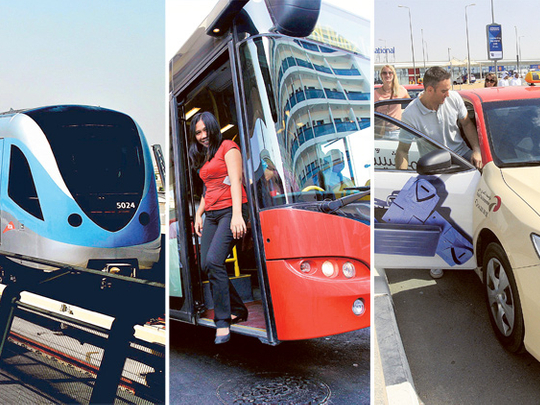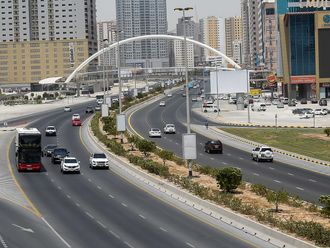
Dubai: The urban infrastructure of the emirate has expanded dramatically over the years, accommodating the rapid growth in population as well as traffic.
Despite the financial crisis in 2008, Dubai’s population has grown by 44 per cent from around 1.53 million in 2007 to around 2.21 million by the end of 2013.
Most of the recent development, including the spread of population, employment centres, shopping malls, retail and other attractions, have come up outside the old city of Dubai — Deira and Bur Dubai — towards the southern part.
Most of the growth of the city during this time has been driven by the opening of major developments such as Dubai Metro, Burj Khalifa, Dubai Mall, Dubai Festival City, Business Bay, Sports city, Dubai Marina, and Jumeirah Village.
According to Nasser Abu Shehab, Director of Strategic Transportation Planning at RTA, Dubai Metro has been the most challenging project undertaken by RTA till date and the project has been worth the pain as it has transformed the way Dubai moves.
“Integration of public transport is the one of the key areas that RTA constantly works towards. With integration comes sustainability, increase in the use of public transport, improvement in health and many other factors,” said Abu Shehab.
He added that there has been a huge increase in the use of the mass transit systems of Dubai following the launch of the Metro, with the integrated network transporting 440.672 million people in 2013.
Comparatively, the public transport ridership was 367.6 million and 346.5 million in 2012 and 2011 respectively.
The average daily ridership of public transport also jumped to 1.3 million last year compared with one million in 2012 and 963,000 in 2011.
Focus on Expo 2020
Over the next six years, RTA’s major focus is to cater to the requirements of Expo 2020, developing road networks leading to the Expo site as well as building public transport infrastructure, including the extension of Dubai Metro’s Red Line.
“All required projects will be identified based on a comprehensive transportation impact study aiming to prepare an integrated transportation master plan for the event,” said Abu Shehab.
The RTA plans include a number of main road projects which directly serve the Expo 2020. These projects include major development of Al Yalayes Road and its intersections, widening the last portion of Mohammad Bin Zayed Road, development of the Academic City road, and the development of a number of interchanges on the main roads surrounding and leading to the Expo 2020 site.
In addition, RTA will provide parking areas and internal roads/walkways needed to serve the site.
Among the major infrastructure developments will be developing and operating transportation Intelligent Traffic Systems and other systems needed to efficiently manage road and public transportation systems serving the Expo site.
“RTA has already initiated the work on the ECCC (Enterprise Command Control Centre) project which aims at developing an integrated transportation control centre and central transportation media and risk management centres. In addition, RTA will provide systems needed to manage parking and taxi areas at the Expo 2020 site,” Abu Shehab said.
Besides developing roads and IT systems, a major focus of RTA’s development programs is to build an integrated public transport system to serve the Expo 2020 site. (See box).
Landmark project
One of the landmark projects that will be ready before Expo 2020 will be the Dh2 billion Dubai Canal development.
The project will see the extension of Deira Creek from Business Bay to Jumeirah, converting Bur Dubai into an island ringed by Deira Creek.
The 3km-long canal will span more than 8,000 square metres of development and have more than 450 restaurants, several bridges and four new hotels. The development is planned to be completed in 2016.
Giving equal importance to pedestrians and bicycle riders, RTA is also developing pedestrian-only areas as well footbridges.
RTA has also developed a Dubai Bicycle Master Plan with plans to develop 850km of strategic bikeways in Dubai by 2030.
“The implementation phases of the Bicycle Master Plan are being re-prioritised in line with cycling demand, urban densities, and are linked to other urban and transport infrastructure improvement projects,” said Abu Shehab.
RTA has so far completed around 130km of cycle tracks in Jumeirah, in some Central Business District areas and Seih-as-Salam area, where a dedicated cycling track is built with associated rest areas and a medical clinic.
“We have plans to add around 200km of cycling tracks in the coming five years,” he noted.










